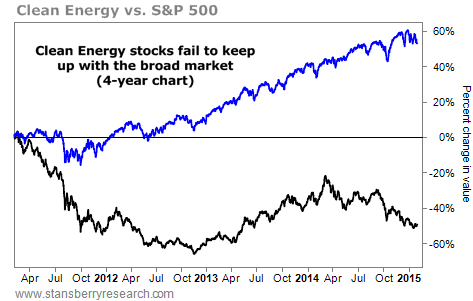| Home | About Us | Resources | Archive | Free Reports | Market Window |
What's The Best Asset Allocation? This Man Found It...By
Tuesday, February 3, 2015
My friend Meb Faber just wrote the book on asset allocation.
His book comes out in a week or two.
One of the main conclusions was quite shocking, actually. I'll share that with you today.
Meb and I talked about the conclusions from his upcoming book, and much more, in the latest episode of my free podcast, Inside True Wealth. (You can find that on iTunes or right here.)
In my opinion, Meb Faber tested what works in allocation the right way...
His book is titled Global Asset Allocation: A Survey of the World's Top Asset Allocation Strategies. In short, he tested the long-term performance of 15 or 20 of the best-known asset-allocation strategies.
"Asset allocation" is answering this question:
How much should I have in stocks, bonds, gold, cash, etc?
That is the big question in investing.
So what is the answer?
Again, Meb studied 15 or 20 of the most famous asset-allocation models to find out.
The main shocking conclusion from Meb's book was that it didn't really matter which asset-allocation model you choose. Sounds crazy, I know. But here's what Meb told me on the podcast...
Without that much performance difference between the best and worst performing asset allocation models, Meb thinks that investors should focus on keeping their fees low as much as worrying about their allocations. He explained it on the podcast:
Meb says you need to pay attention to the fees. One way to "get it" is to visualize it... Imagine walking into your investment advisor's office each year – with $20,000 in cash – to give him in fees...
Say you have a $1 million dollar portfolio, and you're paying 2% in fees a year, that's $20,000. In a $10 million dollar portfolio, that's $200,000...
Visualize – instead of it automatically coming out of your account – having to go take $20,000 cash to your adviser each year.
The thing to remember is that you can't control the returns you get... But you can control the fees you pay.
Of course, do your homework on asset allocation... Meb's book is a good place to start, as it shows which strategies have performed the best. But be just as diligent on doing your homework on the fees you're paying.
As Meb learned in his study, the fees you pay can turn the best-performing strategy into the worst.
Good investing,
Steve
Further Reading:
Find more market wisdom from Steve right here:
Where Interest Rates Are ACTUALLY Headed
Who are you going to believe? The "King of Bonds" or your mortgage broker? My Latest Mistake – Please Learn From It
If you want to get better at investing, you need to analyze your mistakes. That way, you don't make them again... Nearly Six Years In... And Plenty of Upside Remains
Stocks are nowhere near "bubble" valuations today. And that means our upside is still high... Market NotesCLEAN ENERGY INVESTMENT STILL STINKS Today's chart is another reminder... that being an investor in clean energy is a tough road.
Over the years, we've highlighted many times that knowing what NOT to invest in is just as important as knowing what TO invest in. This statement often precedes commentary on clean energy stocks. Most clean energy firms are such terrible businesses that we say they are "perfectly hedged." They are able to lose money in both good and bad economic times. Their stocks are able to stink in both bull and bear markets.
One of the most popular ways to invest in clean energy is with the PowerShares Clean Energy fund (PBW). It holds a basket of solar, wind, and various other clean energy stocks.
You can see the value in our warnings in the chart below. It plots the performance of PBW (black line) plotted alongside the benchmark S&P 500 index (blue line) over the past four years. Clean energy is down 50% while the market is up 50%.
 |
Recent Articles
|



